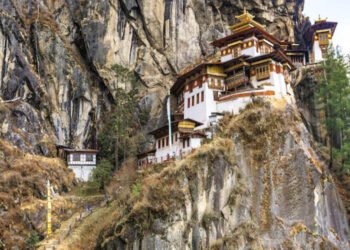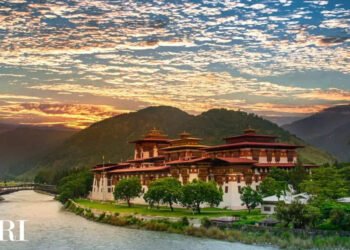Tiny Bhutan about 39,000 sq. km in size, is planning a “Mindfulness City” that will at 1000 sq. km, be larger than Singapore (734 sq. km). It will come up at Gelephu in southern Bhutan where India is committed to laying roads and railway lines to boost connectivity and development. Gelephu has been designated a special administrative region by the government and there are ambitious plans to develop it as an economic hub and gateway for tourists.
Gelephu is an important border crossing for Indian travellers. However, most other international visitors fly into Paro International Airport, near Thimphu.
The “Gelephu Mindfulness City,” as it is being called will be built as a low-to-mid-rise metropolis around a series of inhabitable bridges. Each bridge will “house” key features of the city: a new international airport, a university, and a health-care facility for Eastern and Western medicine.
Particular care will be done to ensure the city will be designed on the nation’s philosophy of Gross National Happiness. Here, a hydroponic greenhouse, a cultural centre, a spiritual centre, a market for local goods, and a hydroelectric dam will be constructed according to the plan.
Commenting on the city, Bhutan’s King Jigme Khesar Namgyel Wangchuck said in December that the country is “not trapped by legacy and can innovate swiftly to implement plans that other countries might hesitate to pursue.”
Construction of a new international airport and a dry port has already started. However, there is no set completion date for the project as it will depend on how “business developments progress.”
Bhutan is hopeful this city will be an inventive for its diaspora to return. The Himalayan kingdom is suffering from an acute brain drain. Bhutanese Foreign Minister Dr Tandin Dorji revealed that 42,829 Bhutanese citizens are residing in 112 countries worldwide. Data from Bhutan’s Tourism Ministry shows Australia is the highest with 17,000 individuals, India is second with 13,800 and Kuwait with 4,000 citizens.






